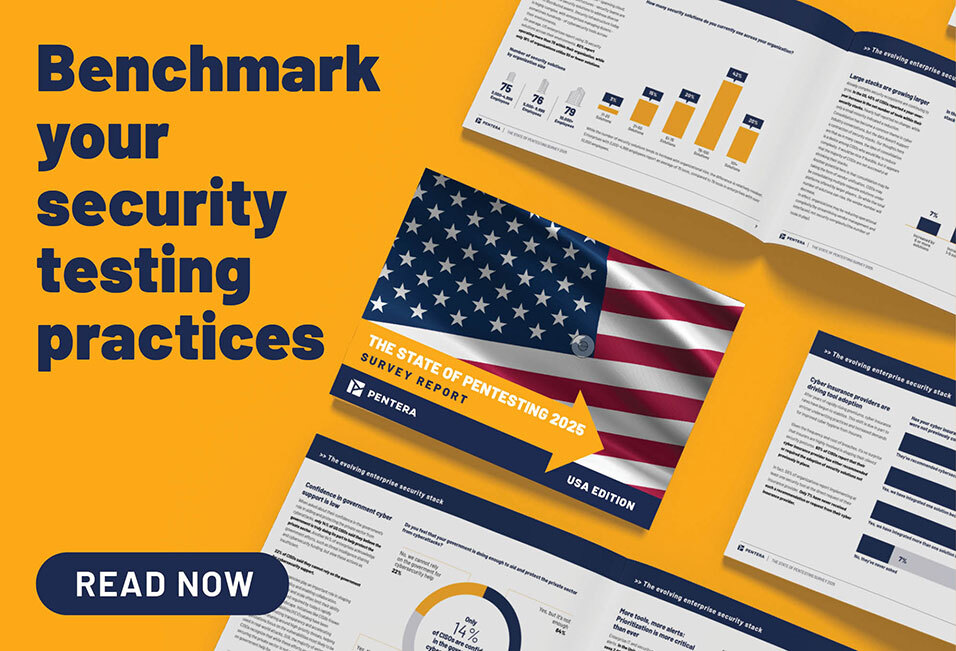For many contractors, navigating the complexities of CMMC compliance presents significant challenges. The Cybersecurity Maturity Model Certification (CMMC) framework establishes stringent security standards to protect sensitive unclassified information within the Department of Defense (DoD) supply chain.
Understanding the certification requirements and determining the appropriate level of compliance can be daunting, especially for smaller organizations. Resource constraints, including a lack of skilled personnel and limited budgets, often exacerbate these difficulties. Therefore, this article provides some necessary background and summary information to help vendors servicing the DoD meet compliance and maintain their contract agreements.
Background of the CMMC
Conceived in 2019, the CMMC was a direct response to escalating cybersecurity threats targeting defense contractors. Alternative compliance measures were deemed insufficient to address the sophisticated tactics employed by adversaries. The DoD introduced CMMC to ensure that all contractors met stringent cybersecurity standards tailored to safeguard Controlled Unclassified Information (CUI) and Federal Contract Information (FCI).
CUI refers to sensitive but unclassified information that requires safeguarding such as technical data or proprietary business information. FCI includes information provided or generated under a federal contract that is not intended for public release. Both are discussed in CMMC because they are frequently handled by Department of Defense (DoD) contractors and must be protected to maintain national security and the integrity of the federal supply chain. This supply chain is composed of many thousands of suppliers and contractors. Its strength and integrity, like any chain, depends upon the weakest link. CMMC is set to prevent that weak cyber link.
CMMC 1.0 was officially launched in January 2020 with five certification levels designed to cater to varying degrees of data sensitivity and cybersecurity maturity. However, the initial rollout faced criticism for being overly complex, particularly for small to medium-sized contractors. The model required contractors to implement and demonstrate compliance with up to 171 security practices across five maturity levels, which necessitated significant investments in technology, personnel training, and third-party assessments. An expense that was not feasible by smaller contractors, especially if their business required a higher maturity level.
CMMC 2.0 and Its Three Levels of Certification
CMMC 2.0, introduced in November 2021, represents a refined approach to cybersecurity compliance for defense contractors. Simplified from the initial five levels in CMMC 1.0, the updated model consolidates certification requirements into three levels. These levels align more closely with existing NIST standards, particularly SP 800-171, to reduce complexity while maintaining stringent security protocols. The streamlined framework ensures that contractors can more effectively meet the requirements necessary to safeguard CUI and FCI.
Level 1: Foundational
This entry-level certification is designed for organizations that handle only Federal Contract Information (FCI), which is less sensitive than Controlled Unclassified Information. It primarily applies to small contractors who operate with limited cybersecurity infrastructure.
- Scope: The 17 basic cyber hygiene practices that are requirements outlined in FAR 52.204-21.
- Assessment Process: Organizations self-assess annually and provide an attestation of compliance to the DoD.
- Example Practices: These include implementing antivirus software, regularly updating systems, and training staff on phishing awareness.
Level 1 certification ensures that even the smallest contractors have baseline protections against common cyber threats, enabling them to fulfill contracts that do not involve CUI.
Level 2: Advanced
Level 2 certification is the most common requirement for organizations that process or store CUI. This level necessitates contractors meet robust security standards that protect sensitive government data.
- Scope: Aligns closely with the 110 security requirements in NIST SP 800-171, covering areas such as access control, incident response, and data protection.
- Assessment Process: Requires a combination of self-assessments for lower-priority contracts and third-party certifications by a Certified Third-Party Assessment Organization (C3PAO) for contracts involving sensitive CUI.
- Example Practices: Organizations must use multifactor authentication (MFA), encrypt data at rest and in transit, and monitor systems for unauthorized access.
Level 2 establishes a secure baseline that balances compliance efforts with the security demands of contracts involving sensitive information.
Level 3: Expert
The highest certification level, Level 3, is reserved for organizations handling the most critical national security information. Contractors at this level are often working with advanced technologies or classified information and are expected to implement a rigorous cybersecurity posture.
- Scope: Builds upon Level 2 by incorporating additional controls from NIST SP 800-172, which focuses on advanced persistent threat (APT) defense. Please see CMMC Level 3 Security Requirements as aided by Pentera.
- Assessment Process: Requires a government-led assessment conducted by the Defense Industrial Base Cybersecurity Assessment Center (DIBCAC).
- Example Practices: Includes continuous monitoring of networks, penetration testing, and implementing advanced encryption and segmentation techniques.
Level 3 certification reflects an organization’s ability to resist and recover from highly sophisticated cyberattacks, ensuring the protection of the most sensitive government data.
Practical Implications for Contractors
CMMC 2.0’s three levels are designed to ensure flexibility while setting clear expectations for cybersecurity practices across the defense supply chain. Contractors must first determine the level that applies to their operations based on the type of information they handle and the sensitivity of their contracts.
For Level 2 and Level 3 certifications, rigorous third-party or government assessments ensure that organizations are not only compliant on paper but also in practice. These higher levels demand advanced tools, continuous monitoring, and a robust incident response strategy to meet the DoD’s stringent requirements.
As the DoD prepares to finalize CMMC 2.0 rules in 2024 and enforce full compliance by 2025, contractors must prioritize their cybersecurity readiness. Organizations that use Automated Security Validation are better equipped to prepare for assessments that will check the company’s alignment with compliance standards.
Key Milestones for 2024 and 2025
- 2024: Finalizing Rulemaking and Early Implementation The Department of Defense (DoD) published the final rule on October 15, 2024, with an effective date of December 16, 2024. Once finalized, contractors will have clear and enforceable guidelines for certification.
Organizations already engaged in defense contracts are advised to conduct readiness assessments and initiate necessary remediations to align with the CMMC 2.0 requirements. - 2025: Full Implementation Across DoD Contracts CMMC certification will be fully implemented across all DoD contracts. This transition will make compliance mandatory for any contractor seeking to bid on or renew defense contracts. Vendors that have not prepared adequately risk being excluded from lucrative DoD opportunities. It is anticipated that CMMC compliance will become a benchmark for cybersecurity maturity across industries beyond the defense sector.
How Automated Security Validation Simplifies CMMC Compliance
Traditional security assessments typically fall short in providing actionable insights, failing to address real-world exploitability of vulnerabilities. This challenge highlights the need for advanced solutions capable of delivering continuous and effective security validation.
Continuous security validation ensures that an organization’s security controls are aligned with CMMC’s stringent requirements, highlighting the vulnerabilities that could be exploited in real-world scenarios.
Achieving CMMC compliance requires contractors to maintain a mature and proactive security posture, which can be effectively supported by Pentera’s automated security validation platform. Its capabilities enable contractors to focus remediation efforts on the most critical vulnerabilities, ensuring efficient use of limited resources. Furthermore, Pentera’s alignment with frameworks such as NIST 800-171 supports seamless integration with CMMC standards, making it an invaluable tool for contractors navigating the path to certification.
Pentera CMMC Support – NIST 800-171 Alignment
| Security Requirement | Number | Description |
| Access Control | 03.01.05 – Least Privilege | Review the privileges assigned to roles or classes of users |
| Configuration Management | 03.04.04 – Impact Analyses | Analyze changes to the system to determine potential security impacts prior to change implementationVerify that the security requirements for the system continue to be satisfied after the system changes have been implemented |
| 03.04.06 – Least Functionality | Review the system to identify unnecessary or nonsecure functions, ports, protocols, connections, and services | |
| Identification and Authentication | 03.05.07 – Password Management | Maintain a list of commonly-used, expected, or compromised passwords, and update the list when organizational passwords are suspected to have been compromised |
| Incident Response | 03.06.03 – Incident Response Testing | Test the effectiveness of the incident response capability |
| Risk Assessment | 03.11.01 – Risk Assessment | Assess the risk (including supply chain risk) of unauthorized disclosure resulting from the processing, storage, or transmission of CUI |
| 03.11.02 – Vulnerability Monitoring and Scanning | Monitor and scan the system for vulnerabilities | |
| Security Assessment | 03.12.03 – Continuous Monitoring | Develop and implement a system-level continuous monitoring strategy that includes ongoing monitoring and security assessments |
CMMC Level 3 Security Requirements as aided by Pentera
| Security Requirement Number | CMMC Level 3 Security Requirements (Selected NIST SP 800-172 Feb2021 security requirement with DoD ODPs italicized) |
| (xiii) RA.L3-3.11.1e |
Employ threat intelligence, at a minimum from open or commercial sources, and any DoD-provided sources, as part of a risk assessment to guide and inform the development of organizational systems, security architectures, selection of security solutions, monitoring, threat hunting, and response and recovery activities. |
| (xiv) RA.L3-3.11.2e |
Conduct cyber threat hunting activities on an on-going aperiodic basis or when indications warrant, to search for indicators of compromise in organizational systems and detect, track, and disrupt threats that evade existing controls. |
| (xvii) RA.L3-3.11.5e | Assess the effectiveness of security solutions at least annually or upon receipt of relevant cyber threat information, or in response to a relevant cyber incident, to address anticipated risk to organizational systems and the organization based on current and accumulated threat intelligence |
| (xx) CA.L3-3.12.1e | Conduct penetration testing at least annually or when significant security changes are made to the system, leveraging automated scanning tools and ad hoc tests using subject matter experts. |
Source: U.S. Department of Defense: Cybersecurity Maturity Model Certification (CMMC) Program
Transform Compliance from Burden to Business Enabler
CMMC compliance is more than a regulatory requirement—it is an opportunity to strengthen organizational resilience and enhance trust within the defense ecosystem. By leveraging automated security validation, contractors can streamline the certification process, address vulnerabilities effectively, and proactively fortify against emerging threats. Adopting such forward-thinking measures transforms compliance from a burden into a strategic advantage, ensuring long-term success in an increasingly complex cybersecurity landscape.
Explore how Pentera can help you achieve cybersecurity maturity and more seamlessly comply with CMMC.






